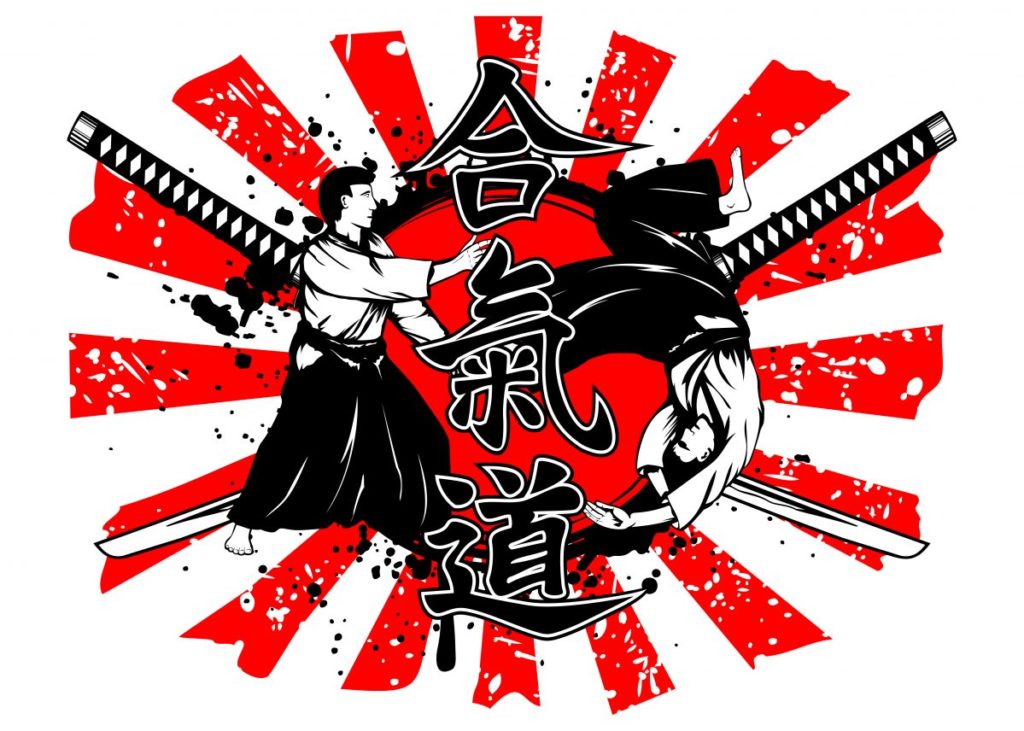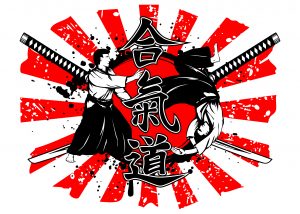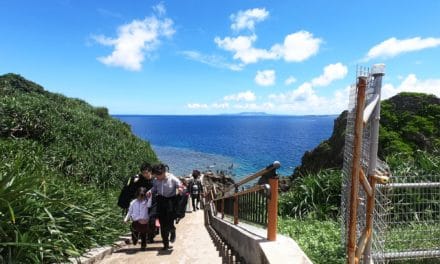If you have trained with a Sensei in/from Okinawa or Japan, odds are you have come across the word, or rather the concept of ‘Mokusou’. It is, however, very rarely practiced outside of Japan. I have trained a little in martial arts outside of Japan and I had not come across this concept. Therefore at my first Aikido class I had thought it was a concept peculiar to Aikido. But as it turns out Mokusou is a vital part of training in Karate, Kendo, Judo, Aikido and other martial arts practiced in Japan.
Mokusou is performed before and after training. In its basic sense it is the transition between training and everyday life. It helps separate training from routine and prevents the spill over of tension, stress and aggression into your training.
When the Sensei or senpai signals the beginning of the class everyone lines up facing the ‘Shomen’ an altar or a particular direction in the Dojo and sit in ‘seiza’. The word “Mokusou” is called out. You should then close your eyes and be quiet and still, focusing on breathing in through your nose and out through your mouth while clearing the mind of all distractions and relaxing the tension in your body. Then “Mokusou yame” is called out followed by Rei and then the training begins.
Though the technical details and the movements and posture may differ from dojo to dojo the basic form is to sit in seiza, put your hands on your thighs palm facing downward and lightly close your eyes. In Kendo you have your right hand under your left hand, palms facing upward and thumbs lightly touching tip to tip. In this position the hands come to rest in front of the ‘seika tanden’ the lower abdominal area which is said to be the place that KI arises from. This symbolizes that all your energies are focused on this spot. In Buddhism this is called the ‘Hokkai jyouin’. You breathe in through the nose and out through the mouth, slowly, as if your breath is in a continuous circle. You let your thoughts come and go, don’t force them out or cling onto them. And gradually you will find yourself becoming calm.
The purpose of this exercise is to clear out your thoughts and get in the right frame of mind to help you focus on the training ahead. And also think about what you want to focus on or practice or what you need to work on in the day’s training. At the end of training, it is an opportunity to think about what you learnt and seal it into memory. Things you did wrong and what you need to put more effort into. If you focus on your breathing you can find a good rhythm to start and to finish your training.
These are the fundamentals of the concept, that any beginner is told.
However, is it just another quaint old Japanese tradition that you routinely go through?
Most people just go through the motions of performing Mokusou, without considering its relevance. However, it is much more than just a ritual at the beginning and end of training. Especially in today’s stress filled world, its use or benefits need not be confined to the time and space of the Dojo.
Mokusou can be performed any time you need to calm down and focus.
It is a time of deep stillness and respect. It instils a respect for the universe (your surroundings/nature/other beings), your body (which is a part of it) and the training or work that precedes or follows it. It also helps you achieve a sense of peace and a focus that would ordinarily not be possible by just coming into the Dojo and training. In fact if you train with all the day’s stress, worry and frustrations at the back of your mind, you’ll be more apt to be unnecessarily aggressive and tense. And you are more prone to injuries when you work out with tensed muscles.
So, how to perform Mukosou effectively?
There are three things you should be aware of for Mokusou to be effective.
Good Posture, correct Breathing and Focus
As mokusou is usually performed while seated in seiza, correct Posture is extremely important. For those not used to seiza it can be quite uncomfortable and you might be distracted by your feet going numb and you might be tempted to move around to find a comfortable position. However it is important to sit upright with your hands on your thighs, so that your spine is properly aligned and your body weight is centered.
Correct breathing, usually belly breathing, is important to calm your mind and body. It oxygenates the blood and helps release muscle tension and improves focus. You should breathe in slowly through your nose, hold the breath for a couple of seconds and breathe out slowly through your mouth. While breathing in you fill your abdomen not your chest and compress your abdomen while breathing out. Some Dojos follow Ki breathing techniques which help align your mind and body and improves the flow of Ki by directing the flow of oxygen to the Seika tanden, by visualizing your breath in a continuous circular flow.
Focus is honed during mokusou as you have only 1-2 minutes to prepare your mind and body for training. You need to quieten your mind, relax your muscles, center yourself (find a balance within) and focus on the day’s training. These three are intertwined, it takes a certain amount of balance and focus to sit in seiza, which in turn promotes deep Liberation Serif of Mushin or empty mind. This takes years of practice however if you practice it regularly you might get a glimpse of Mushin, a moment when you feel one with the universe.
As a beginner in Aikido, I was drawn into the atmosphere of the Dojo. At first sight I could not figure out why it felt different from the martial arts training I had had till then. But as I started training at the dojo I came to feel that this electric atmosphere was created by the practice of Mokusou, before and after training. It was an intriguing experience to be suddenly pulled out of daily routine and into a state of intense focus only on training. It helped me become aware of my body and mind in a way I had never experienced before.
My curiosity was piqued when I had the same experience each time I trained at this Dojo. Unable to contain my curiosity I asked the sensei for an explanation. He said, “Mokusou is a time when you leave yourself behind and become one with the universe. When you leave yourself behind, you leave all your worries, your thoughts, your weaknesses and your ambitions. At that state you just are. All you have is your existence and the existence of the universe. And when you discover the continuum in existence, you will have found the source of KI. You are now able to blend your Ki with that of your partner/opponent’s Ki and you will not need force to defeat your opponent because you now know that all things are energy and they don’t exist separately but in continuum. At this stage your focus is expanded from yourself to include your surroundings till you are one with the universe.”
To have had a glimpse of Mushin is a very interesting experience. And I believe it can be achieved in the Dojo as well as outside of it. Mokusou is an exercise we can incorporate into our lives even if we are not training. Even if you aren’t aiming for Mushin, it is very effective in dealing with stress and helping you calm down, finding balance and focusing your energies on the task at hand. Mastering this takes times and effort, but in our stress filled modern world it is well worth every second of effort you put into it.
![]()





















